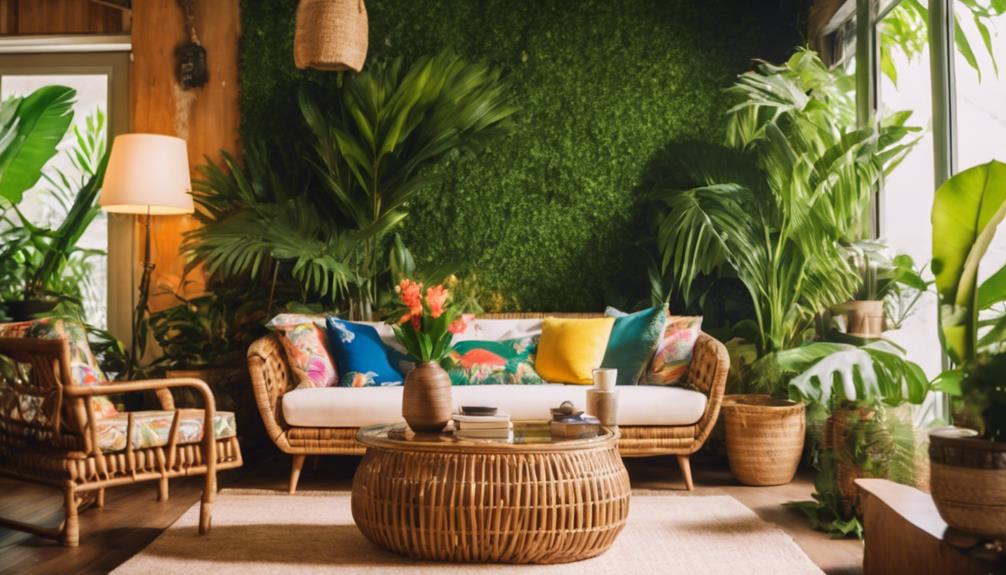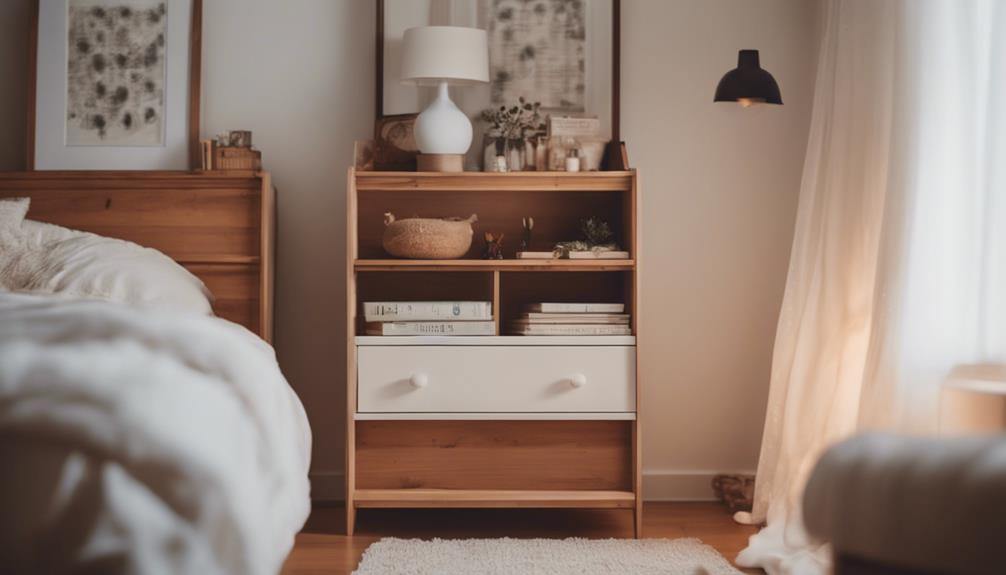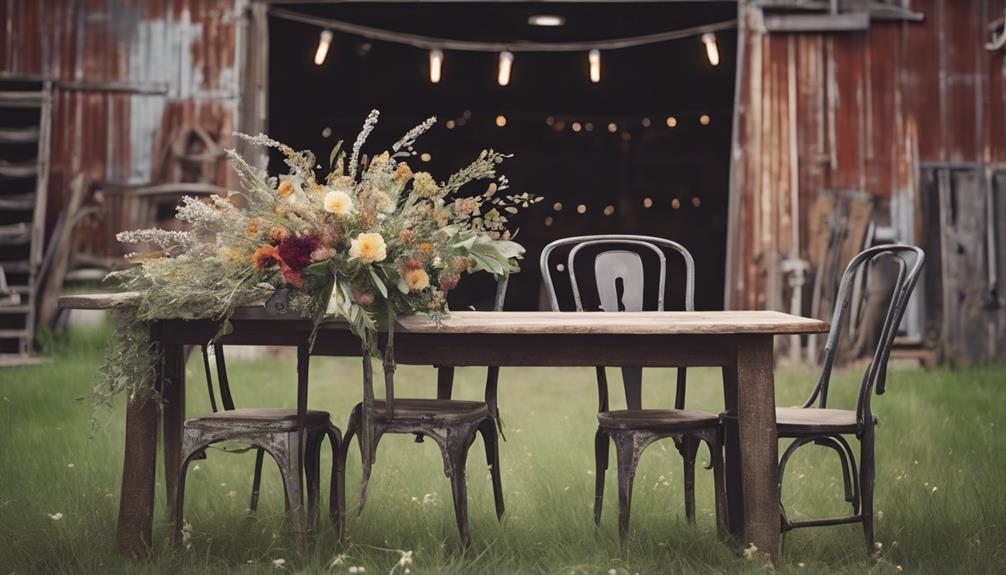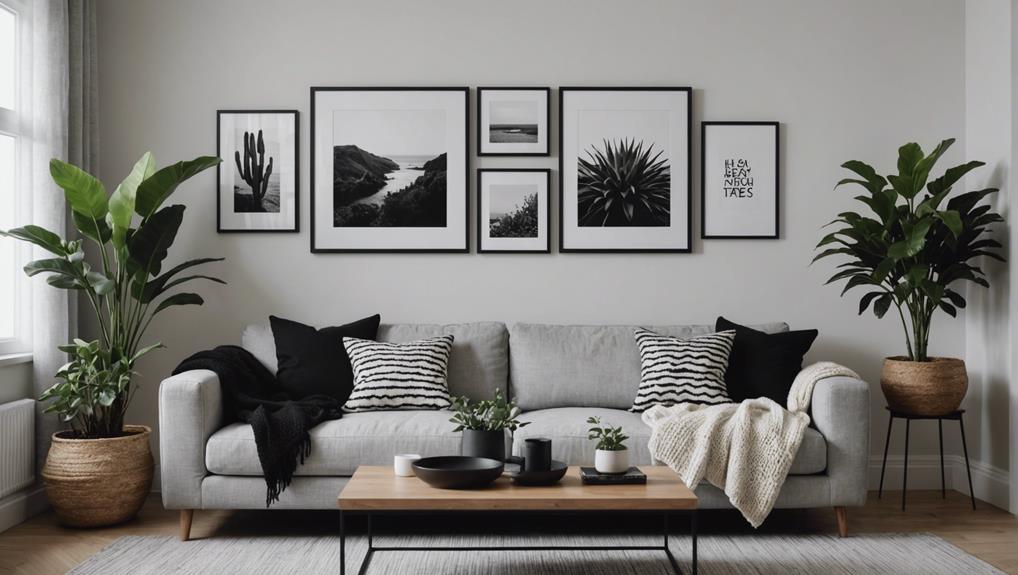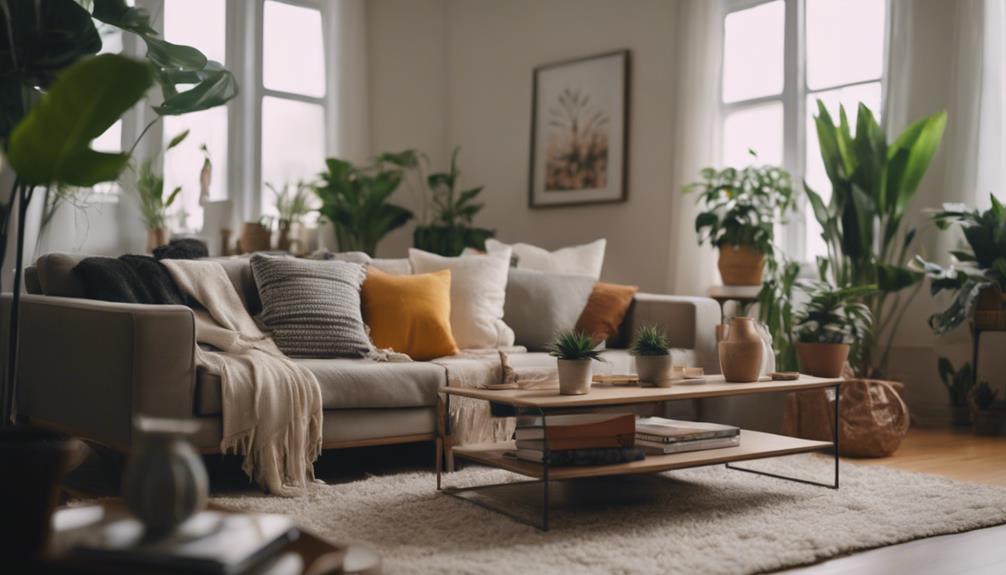We're bringing the tropical vacation vibe into our backyards, with over 70% of homeowners considering outdoor spaces essential, according to the National Association of Landscape Professionals. To create our own tropical escape at home, we consider sunlight, soil type, and climate zone for plant selection, factoring in care and maintenance needs. We design with water features for a lush landscape, aiming for a functional and sustainable tropical garden. By mixing different plant species, incorporating water features, and creating cozy seating areas, we can achieve a vibrant and tranquil oasis. As we explore further, we'll uncover even more secrets to crafting our ultimate tropical retreat.
Key Takeaways
• Consider sunlight, soil type, and climate zone when selecting plants for your tropical garden to ensure their survival and thrive.
• Incorporate a mix of foliage plants, flowering plants, and ground covers to create a lush and vibrant garden.
• Design your tropical landscape with layers of foliage, varying heights, and textures to create a balanced and diverse look.
• Incorporate water features, such as ponds or fountains, to add visual interest and create a tranquil atmosphere.
• Add natural elements, such as bamboo benches and rattan furniture, to create a cozy outdoor seating area that complements your tropical garden.
Planning Your Tropical Oasis
As we embark on creating our tropical getaway, we must first take into account the unique conditions of our yard, including climate, sunlight levels, and soil type to choose the perfect tropical plants that will thrive in our outdoor space.
When planning our tropical sanctuary, we need to factor in elements such as the climate zone we're in, as this will dictate which plants will flourish and which will struggle. We must also contemplate the care and maintenance needs of the plants we choose, ensuring we can provide the necessary attention to keep them healthy.
Designing a tropical backyard requires thoughtful consideration, incorporating water features and layers of tall trees, midsize shrubs, and low-lying plants to create a lush and diverse landscape. By taking these aspects into account, we can create a tropical paradise that transports us to a tropical state of mind.
As we plan our oasis, we must remember that 'a well-designed tropical garden isn't just visually appealing, but also functional and sustainable' (Tropical Garden Design). By keeping these elements in mind, we can create a truly unforgettable tropical escape.
Selecting the Right Plants
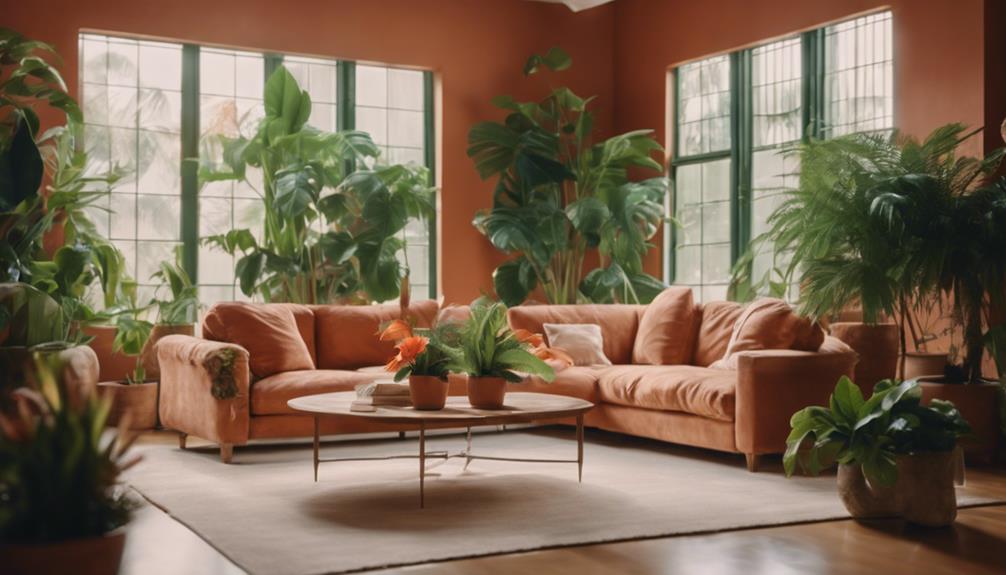
We'll start by choosing the stars of our tropical show, selecting plants that will thrive in our unique outdoor conditions and create a lush, vibrant atmosphere. When it comes to tropical landscaping, we want a mix of height, texture, and color to achieve a balanced and visually appealing design. For a lush and vibrant tropical garden, we'll choose tropical plants like palms, elephant ears, bird of paradise, and ginger.
| Plant Type | Description |
|---|---|
| Foliage Plants | Provide lush, vibrant foliage, e.g., palms, elephant ears |
| Flowering Plants | Add pops of color, e.g., orchids, bromeliads |
| Ground Covers | Add texture and visual interest, e.g., liriope, mondo grass |
Creating Layers of Foliage
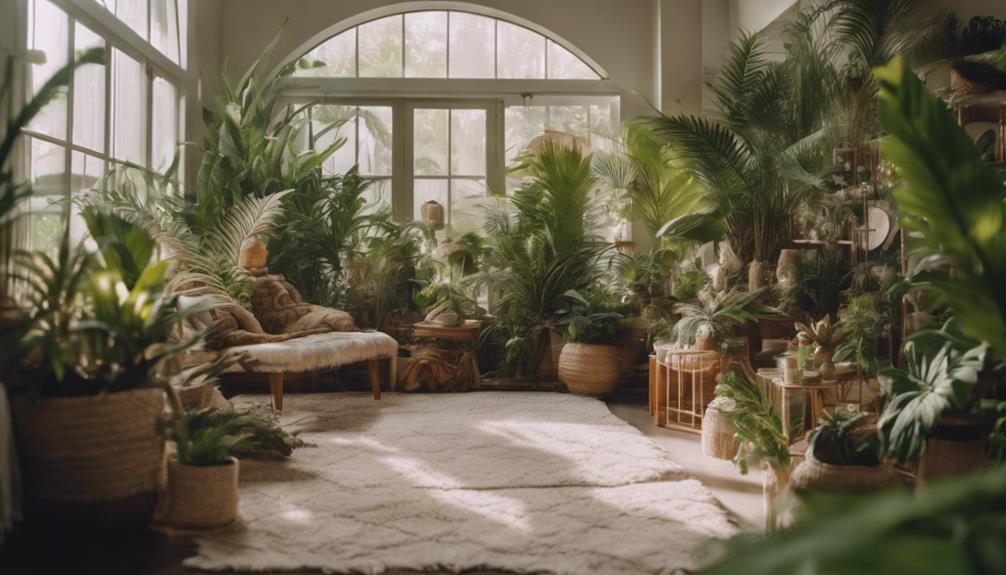
By combining plants of varying heights, textures, and colors, we can create a lush, multi-dimensional landscape that transports us to a tropical paradise. When it comes to creating layers of foliage, we're not just limited to a single type of plant. We can mix and match different species to achieve a diverse look that's reminiscent of a tropical jungle.
For instance, tall trees like palms or bamboo provide a canopy, while midsize shrubs like hibiscus add color and structure. Meanwhile, low-lying plants such as ferns and ground covers fill in gaps and create a dense, jungle-like atmosphere. Large-leaf plants like elephant ears or philodendrons add visual interest and a tropical rainforest feel to the garden.
Incorporating Water Features
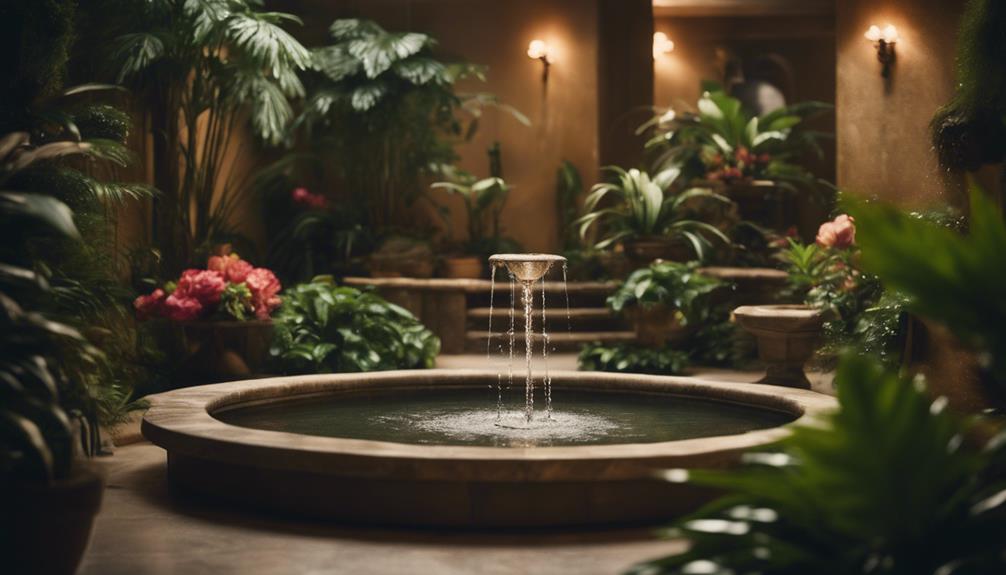
To take our tropical escape to the next level, we're incorporating water features that not only soothe our senses but also create a thriving ecosystem. Ponds, for instance, can be a serene addition to our tropical garden, especially when adorned with aquatic plants like water lilies and lotus.
Adding fish like koi or goldfish not only enhances visual interest but also contributes to the ecosystem of our tropical oasis. We're also considering incorporating cascading waterfalls, babbling brooks, or fountains to create movement and a sense of tranquility.
By designing our water features to provide a habitat for wildlife, we can attract birds and butterflies, adding dynamic elements to the space. Whether it's a small fountain or a large pond, water features can serve as focal points in our tropical garden, enhancing the overall tropical paradise experience with their beauty and sound.
Designing a Cozy Seating Area
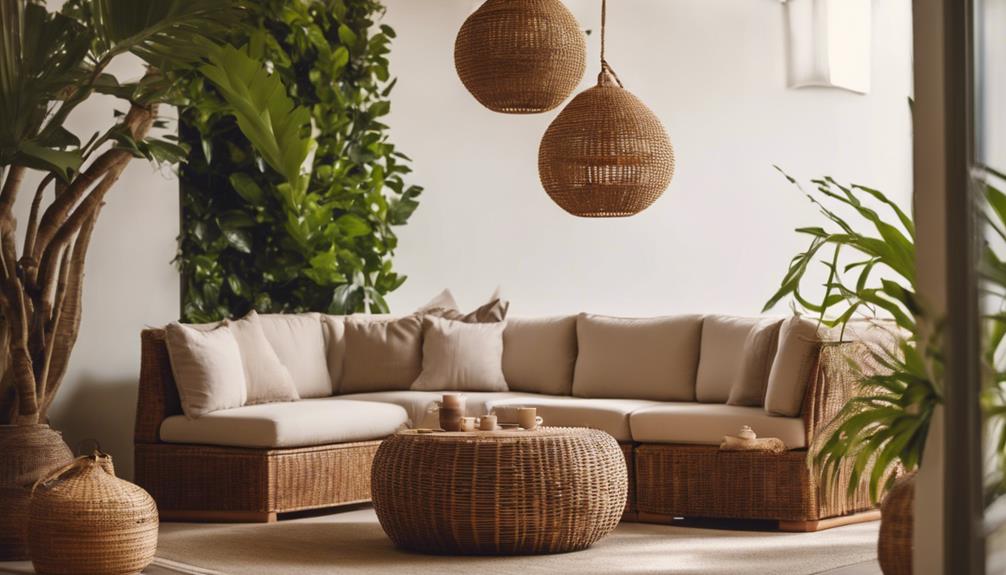
As we create our own tropical escape at home, we're excited to design a cozy seating area that's perfect for relaxation. To achieve this, we'll focus on three essential elements:
Cozy Corner Essentials
Comforting Fabric Choices
Soothing Color Palette
These elements will work together to create a tranquil atmosphere that invites lounging and socializing. By incorporating these elements, we'll be able to craft a seating area that's both functional and aesthetically pleasing, making our tropical oasis feel like a true retreat.
Cozy Corner Essentials
We craft our cozy corner's inviting atmosphere by incorporating natural elements, like bamboo benches and hammocks, which instantly evoke the warmth and tranquility of a tropical escape.
As we design our seating area, we want to create a space that transports us to a tropical garden oasis. To achieve this, we focus on incorporating essential elements that evoke a sense of relaxation and tranquility.
Here are a few must-haves for our cozy corner:
- Accent pillows and cushions in bold colors or tropical patterns to add a pop of color.
- Tables for drinks and snacks to enhance functionality.
- A Tiki bar as a focal point for a tropical backyard oasis.
Comforting Fabric Choices
We're wrapping ourselves in comfort with fabric choices that evoke the warmth and serenity of a tropical haven. When designing a cozy seating area, we opt for cozy fabric options like cotton, linen, and velvet, which provide the perfect blend of softness and durability.
To guarantee our outdoor space remains comfortable and low-maintenance, we incorporate outdoor fabrics that are weather-resistant and easy to clean. Tropical patterns, such as palm leaves and floral prints, add a touch of whimsy and vibrancy to our seating area. We also choose upholstery with tropical motifs like pineapples, flamingos, or exotic flowers for a fun and playful touch.
To further enhance the comfort level, we add throw pillows and blankets made from soft materials. By selecting these fabrics, we create a comfortable seating area that invites relaxation and tranquility, perfect for a tropical escape at home.
Soothing Color Palette
To evoke the serene ambiance of a tropical haven, we select a soothing color palette that calms the senses, setting the tone for a cozy seating area that beckons relaxation. When it comes to creating a tranquil atmosphere, our color choices play a significant role.
We opt for a palette that combines soft blues, greens, and neutrals to create a calming ambiance. To add a touch of vibrancy, we incorporate pops of tropical colors like coral, turquoise, and yellow.
Some tips to keep in mind:
- Choose a soothing color palette that calms the senses
- Incorporate tropical colors like coral, turquoise, and yellow for a vibrant touch
- Balance bold colors with natural materials like rattan, bamboo, or teak for a cozy tropical feel
Attracting Wildlife to Your Yard
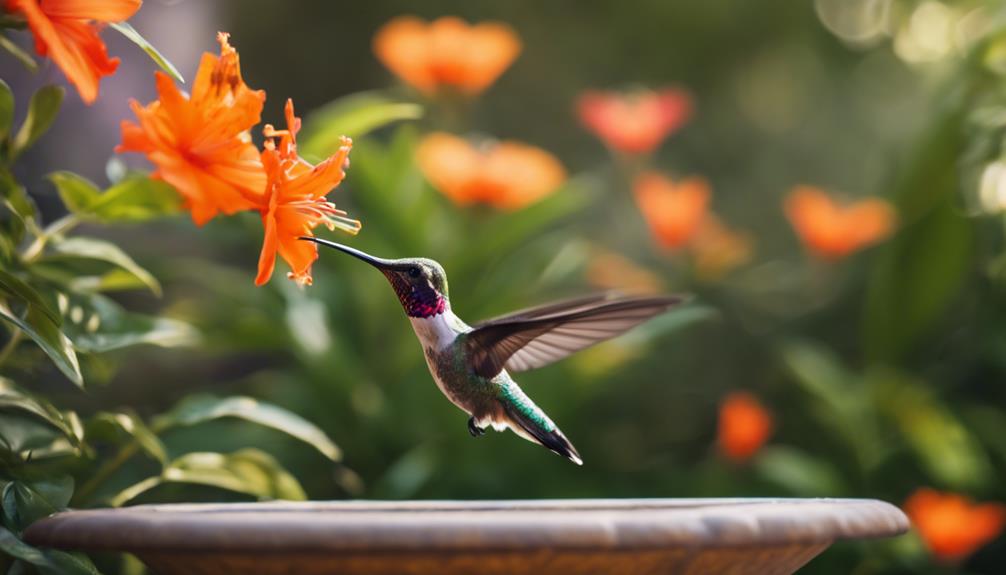
By incorporating plants like Mexican salvia and bulbine, we can transform our outdoor space into a vibrant oasis that beckons in butterflies and hummingbirds. These specific plants are known to attract these beautiful creatures, creating a wildlife presence that enhances our outdoor space. To further attract butterflies, we can incorporate bright tropical colors in our garden, creating a cheerful ambiance that's perfect for a tropical escape.
| Attracting Wildlife | Tips |
|---|---|
| Butterflies | Plant Mexican salvia, use bright tropical colors |
| Hummingbirds | Plant bulbine, add tropical signs and bamboo wind chimes |
| Jungle-like atmosphere | Incorporate specific plants, add Tiki masks |
Adding Shade Options
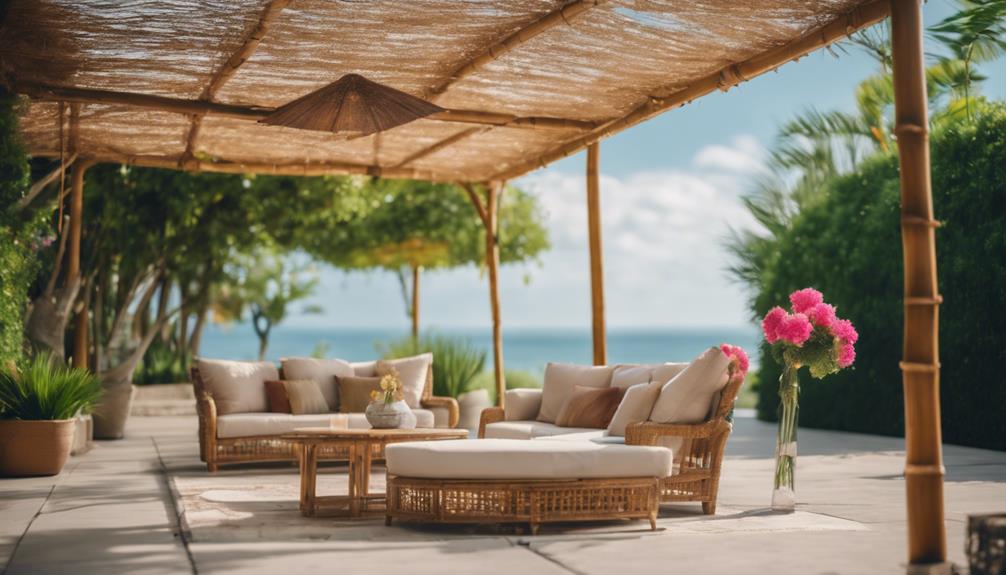
Our tropical escape isn't complete without incorporating shade options to protect our plants and create a comfortable outdoor space. As we design our oasis, we need to ponder the importance of shade in creating a relaxing atmosphere. Not only does shade shield our plants from direct sunlight, but it also provides a comfortable spot to lounge and enjoy the outdoors.
To achieve this, we can integrate various shade options into our design. Here are a few ideas to get us started:
- Adding a Palapa or thatch umbrella provides beauty and shade in our backyard, creating a perfect spot to relax.
- Thatch umbrellas are movable and versatile, suitable for various areas in our tropical oasis.
- Contemplate ordering an umbrella kit for convenience and easy assembly, allowing us to enhance our outdoor space with shade options.
Building a Focal Point
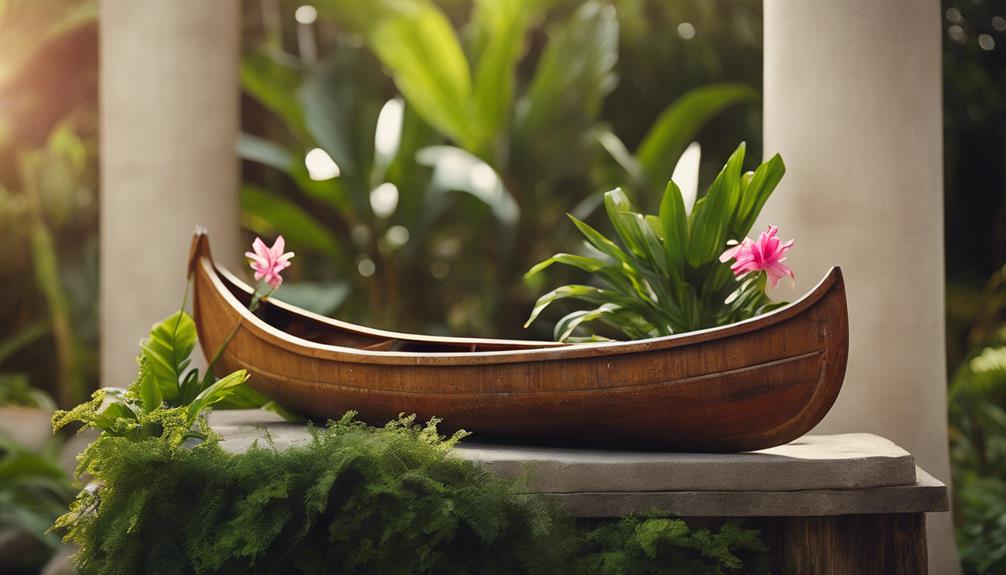
We're now ready to create a show-stopping centerpiece that draws the eye and defines our tropical escape. A well-designed focal point can elevate our outdoor space, creating an unforgettable ambiance.
For us, this could be a stunning Tiki bar, complete with bamboo accents and thatched roofing, instantly transporting us to a tropical paradise. Alternatively, incorporating a fire pit adds a dramatic touch, perfect for cozying up on cool evenings.
To further enhance the ambiance, we can create natural stone pathways that lead to our focal point, such as a pool or outdoor kitchen. Adding shade with a Palapa or thatch umbrella not only provides comfort but also enhances the beauty of our backyard.
For a more hands-on approach, we can consider DIY projects like building a fire pit with stones, sand, and a steel ring for durability. By incorporating these elements, we can create a captivating focal point that becomes the heart of our tropical escape.
Designing Pathways and Walkways
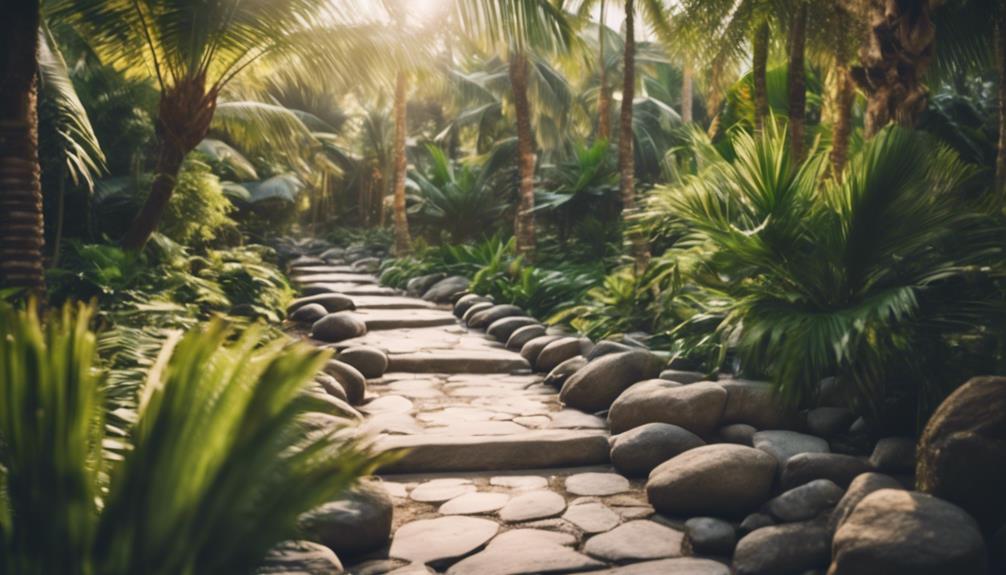
As we've crafted our focal point, let's now create inviting pathways that weave our tropical escape together, drawing visitors seamlessly from one enchanting area to the next.
To achieve this, we'll incorporate natural stone pathways that exude a magical and authentic tropical feel in our backyard. By leading these pathways to focal points like a Tiki bar or pool, we'll create a sense of unity and flow in our outdoor space.
To take it to the next level, we can:
- Use native stones for our pathways to enhance the authenticity of our tropical oasis
- Press coarse rock salt into wet concrete for a weathered look that adds character to our stone pathways
- Link different areas of our yard with stone pathways to create a cohesive and inviting tropical escape
Completing the Paradise Look
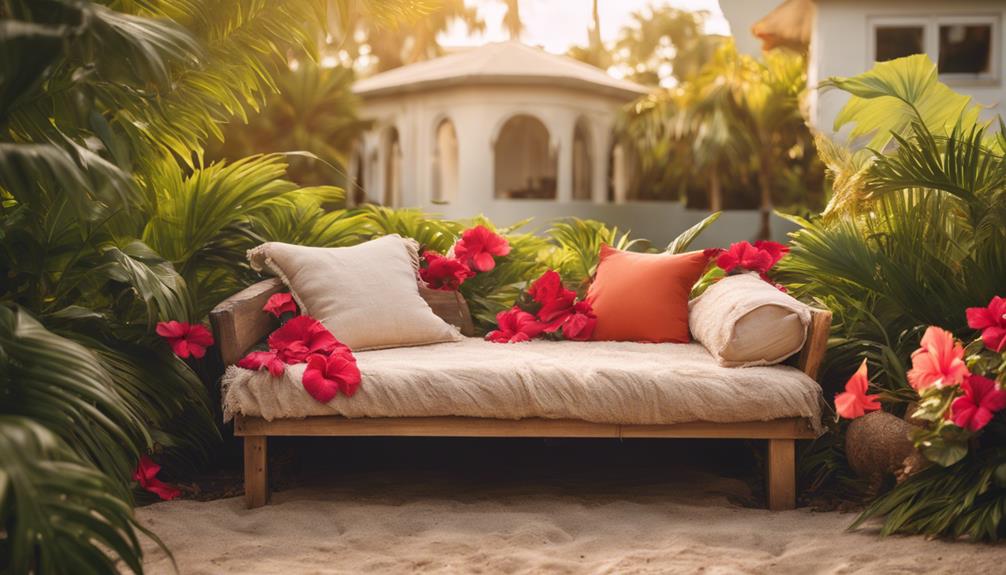
To complete the transformation of our backyard into a tropical oasis, let's infuse it with the vibrant spirit of the islands by incorporating accents, décor, and unique elements that evoke a sense of paradise. We can create cozy seating areas with rattan furniture and vibrant accent pillows, perfect for a relaxing tropical retreat. To elevate the tropical oasis feel, we can incorporate tropical accents and décor like water features and tiki torches. For a more personalized touch, we can craft our own tropical décor, such as hand-carved masks and bamboo wind chimes, to create a festive atmosphere.
| Element | Description | Benefit |
|---|---|---|
| Water Features | Add a soothing sound to your oasis | Creates a calming ambiance |
| Tiki Torches | Illuminate your outdoor space | Adds a warm, tropical glow |
| Rattan Furniture | Comfortable seating for relaxation | Defines cozy seating areas |
Frequently Asked Questions
How to Create a Tropical Environment in Your Home?
"We're often asked how to create a tropical environment in our homes, and we're excited to share our tips, from choosing the right plants to incorporating natural materials and warm lighting, to transport ourselves to a tropical oasis."
How to Make Your Home Feel Tropical?
"We're craving a tropical vibe, so we're swapping heavy drapes for light, airy curtains and trading dark colors for bright hues to make our home feel like a sunny island getaway."
How to Make Your Backyard a Tropical Paradise?
We're turning our backyard into a tropical paradise by incorporating lush foliage, vibrant blooms, and soothing water features, creating an authentic oasis that's perfect for relaxation and attracting local wildlife.
How to Turn Your Backyard Into Paradise?
As we envision our backyard transforming into a haven, we'll turn it into a paradise by incorporating lush greenery, soothing water features, and cozy nooks, transporting us to a serene oasis, where our worries fade like morning dew.
Conclusion
As we conclude our journey to create a tropical escape at home, we've woven together the essential elements: lush plants, soothing water features, cozy seating areas, and meandering pathways.
By incorporating these design elements, we've crafted an oasis that transports us to a tranquil world. 'The key to a successful tropical garden is to create a sense of layers and textures,' notes landscape designer, Jamie Durie.
With these expert tips and a dash of creativity, our indoor or outdoor space has transformed into a serene retreat, perfect for relaxation and rejuvenation.
